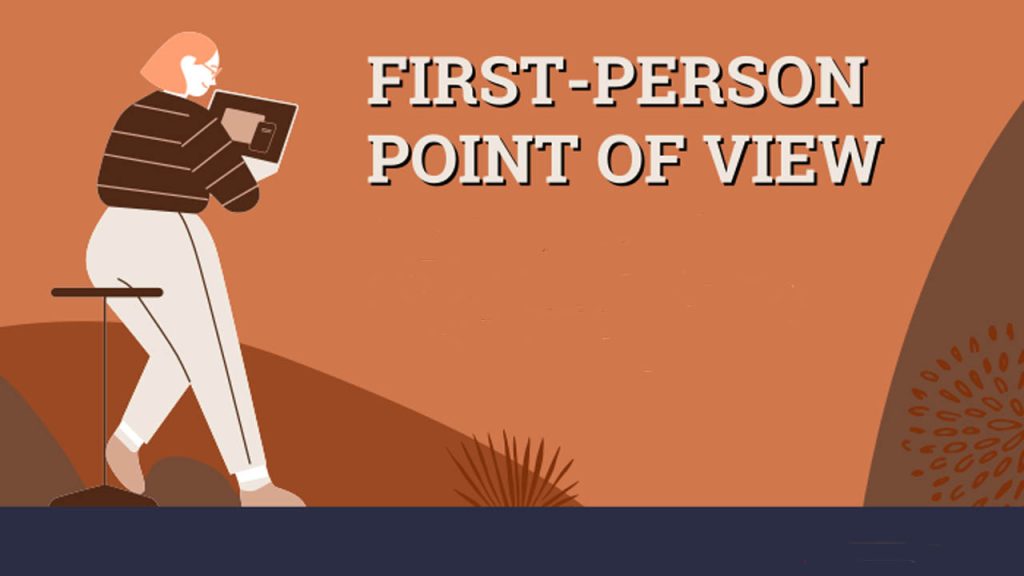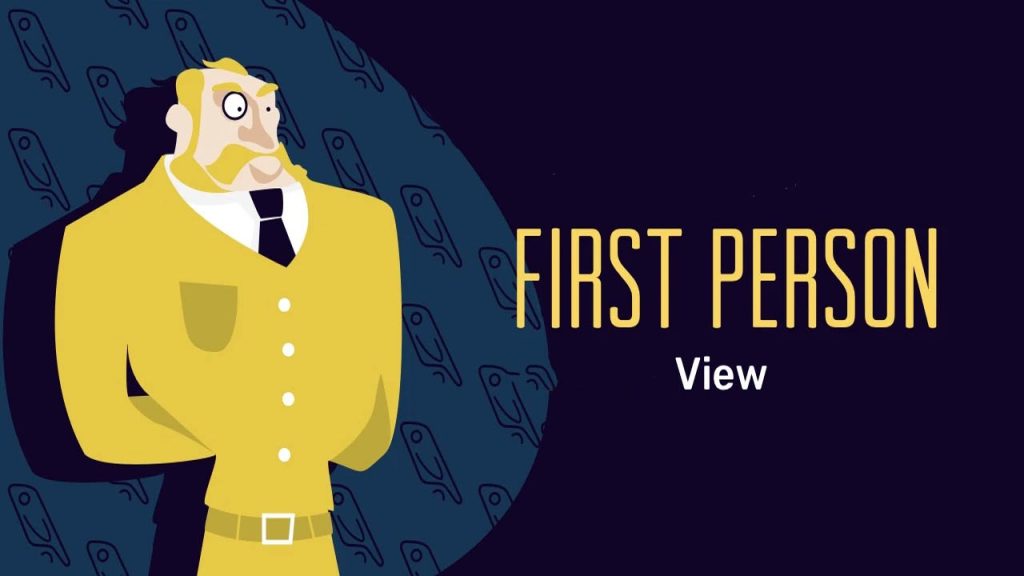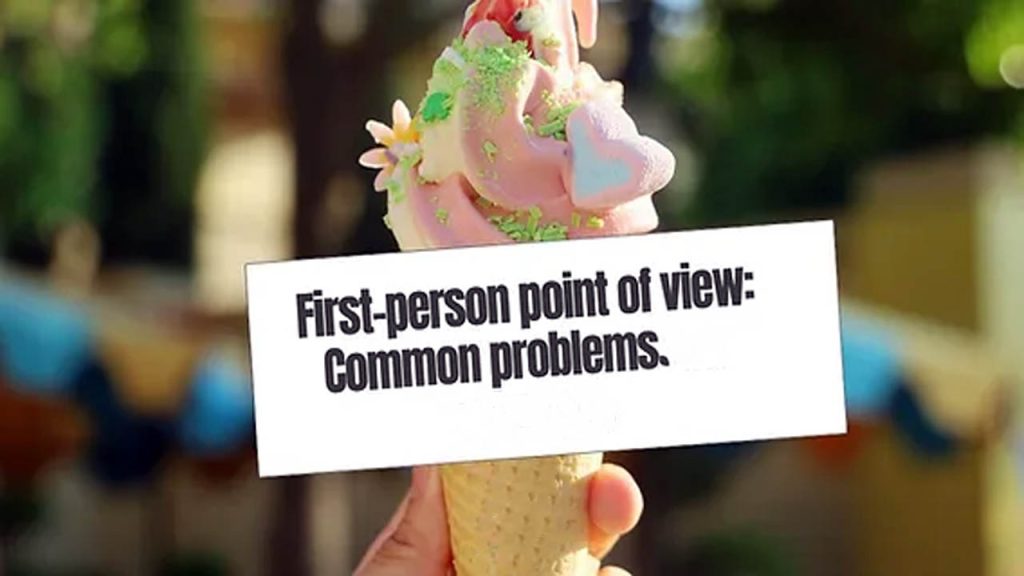Exploring First-Person View in Marketing

The very fast changing digital marketing environment demands unique strategies through the brands to win and retain consumer attention. One of the strongest approaches that started to gain momentum is the First-Person View perspective. FPV may be defined as a style of storytelling, where the viewer is submerged in the narrative as if they are experiencing it firsthand. Exploring the full meaning of FPV, its significance in marketing, and exactly how brands can apply this technique to have better engagement and outreach with the audience, this article bounces on the topic regarding the usage of FPV in marketing.
Complementing the staggering sea of information and advertising now facing consumers, it may be that the power of appealing storytelling has never been as important. FPV not only offers a deeper emotional connection between brands and their targets but also helps distinguish brands from each other in a chaotic market. A company embracing this view can make experiences richer for its audience, leading to deeper resonance, engagement, brand loyalty, and conversions.
Key Takeaways:
- Consumer Attention: First-person view captures interesting narratives that sum up the amount of information available today.
- Marketing Differentiation: Brands can differentiate through FPV since they present unique experiences to the consumer.
- Emotional Connection: An emotive connection is created for both the brands and the consumers via FPV since this enhances brand loyalty.
What is a First Person View?

FPV means the form of narration where the reader or audience directly positions themselves into the shoes of the narrator. It involves marketing, for this strategy is called content creation, where a consumer can feel or experience a product, service, or brand. Together with the application of visual and audio combined with narrative storytelling, brands can help their audience feel that they are experiencing the event instead of just merely watching.
Key Features of FPV:
- Storytelling Immersion: With FPV, brands can relate stories that put the viewer within the action, thus creating an involvement immersion.
- Authenticity: It institutes credibility and accessibility by using real experiences, through the eyes of the user.
- Emotional Engagement: FPV invokes emotions, which further motivates them to buy and retain the loyalty to the brands as well.
FPV, to begin with, is very effective in video marketing by showcasing brand offerings within an engaging narration. Be it a tour operator promising an authentic experience or the demonstration of a product or even simply a customer testimonial, FPV provides authenticity in things that conventional advertising sorely lacks. It can, in many ways, evoke emotions and stimulate relatability, thereby affecting purchasing decisions.
With authentic connectivity with brands now being a desire of the consumer, FPV, in the digital age, forms an indispensable tool to build trust and credibility. From real life to stories, as seen through the lens of the user, this shall be one tool that brands inculcate a feeling of community and engagement within its target audience.
Why is First-Person View Important?

The importance of FPV in marketing cannot be overstated. First, it maximizes the use of the user’s involvement by making the experience more immersive. When people feel connected directly to a story, they would likely remember it and tell others about it. Organic sharing amplifies brand reach and visibility in such a way that it raises brand awareness.
Significance of FPV
- Boosted User Engagement: Immersive experiences lead to better retention of the brand message.
- Increased Shareability: Engaging content really encourages the customers to share with friends experiences about the brand, thereby increasing the visibility of the brand.
- Brand Awareness: As many customers remember and share FPV content, it creates a positive contribution to overall brand recognition.
It also falls in line with the desire of the emerging consumer for authenticity. A world in which consumers increasingly distrust traditional advertising, being authentic in the very nature of the content itself, in FPV will help build consumer trust. Real experiences and voices provided to consumers serve as a kind of transparency endearing to today’s consumer, especially in sectors like travel, food, and lifestyle, where personal experiences play a large part in their purchasing decision.
FPV may also bring about an increase in conversion rates. Reviews showed that cinemagraphic storytelling meant higher engagements, which eventually led to conversions. The manner in which a brand can communicate with its audience on emotional levels whereby compelling stories lead to action; consumers may buy, opt to newsletters, or engage with the brand on social media.
Implementing First-Person View within Marketing Strategies

To make FPV seamlessly work in any marketing tactic, the brand needs to cover several focal elements. First and foremost, they should focus on storytelling. This means creating stories that are relatable and moves the heart emotionally. Through video, social media posts, or blog, the story should be central to the experience.
Implementation Strategies of FPV:
- Focus on Storytelling: Create relatable narratives that connect emotionally with your audience.
- Use Rich Media: Good picture and video qualities make FPV more interesting.
- Engage User-Generated Content: Help customers be authentic through content generated by consumers by sharing their experiences.
Visual content is quite an important aspect in FPV. Brands would have to rely on high-quality imagery and videos that capture what the story being put across seeks to convey. For instance, a travel company would have videos that show spectacular sceneries and personal experiences of other travelers who have been there before, making it easier for the audience to visualize the same scenes.
Another compelling way to introduce FPV could be through user-generated content. It makes customers speak about their experience with the brand, and such authentic content will help to appeal to prospective consumers. Real stories and testimonials also add another layer of credibility to the messaging.
Finally, technology can take FPV to the next level. VR and AR are new tools that can immediately transfer consumers into immersive experiences. Brands must take advantage of such technologies to create an unforgettable experience that captures and locks into attention.
Effective Practices in Creating Good FPV Content

To make effective FPV content, one must approach it carefully, putting audience experience at the top of the list. Here are a few good practices to abide by:
Good Practices:
- Know Your Audience: Know and understand who your target audience is. As much as possible, create content that would appeal to them.
- Authenticity is the Key: The FPV content should be true to life in such a way that trust can be developed while building credibility on your brand.
- Consistent Messaging: The consistent messaging about what you want to convey through your narratives will help create a stronghold of a brand identity.
Knowing your audience is fundamental to every successful FPV campaign. You will identify their interests, preferences, and pain points so as to tailor the FPV content that would reach them, thus engaging and creating a much deeper connection.
Authenticity is the Key Word:
Authenticity is required in FPV marketing. Brands must make sure that whatever they are posting is real and authentic. They may use real customers and their stories or any behind-the-scenes insights. Authentic stories help build not only trust but also relatability for the consumer.
Consistency in Communication:
The stories may vary, but the overall message should be that of the brand. Consistency cements a brand’s identity and makes it easier for the audience to relate the story back to the brand. This is mainly the case in FPV marketing, where storytelling becomes a critical function.
Good FPV Campaigns
To illustrate just how effective FPV can be in marketing, let us explore some fantastic campaigns that have used this technique quite effectively.
Prominent FPV Campaigns
- GoPro: It puts forward exciting adventures from the user’s perspective with user-generated content. This experiential approach not only speaks of the product’s capabilities but also resonates the need for adventure and authenticity.
- Airbnb: First-person testimonials of both the host and travelers are featured throughout the marketing campaigns of Airbnb, and there is an added personal touch to enhance the credibility and appeal of the brand.
- Nike: Nike has been successful with FPV on ad campaigns having athletes sharing their personal journeys in inspiring the viewer to connect at a deeper emotional level.
GoPro: This marketing strategy bases itself on the concept of user-generated content. GoPro is presenting the product in a showcase to the viewers as they share the excitement of such thrilling adventures by means of cameras. Hence, it is a true immersive strategy that does not only market the product but also arouses the consumer’s desire for thrill and authenticity of adventure. In this context, the FPV content that GoPro generates continues to help strengthen the sense of community among users sharing the same passions.
Airbnb: Airbnb runs highly effective marketing campaigns in FPV with testimonials of hosts and travelers on camera. It employs real-life stories and experiences to attach a personal facet that makes it sound more authentic and appealing. This way, the brand builds an image and ease for the potential customer to project him/herself into such new accommodation, thus igniting an emotional attachment with the brand.
Nike: Nike seems capable of utilizing the idea of FPV in athlete-back shares their stories and struggles. Since such reports are from the views of the first-person testimonies, FPV allows viewers to become more emotionally connected with Nike. This approach to storytelling for Nike extends its dedication toward aiding people thus relating to its identity.
Obstacles for Implementing FPV

While FPV has its various upsides, it also has its downsides and hassles that brands need to address. In going through these challenges, brands may prepare themselves in the best ways possible to surmount the risks.
Common Challenges
- Resource-Intensive: High-quality FPV content usually calls for hours of time and resources.
- Audience Saturation: With FPV’s unprecedented growing popularity, being ‘heard’ among the noise is much of a challenge.
This challenge of being authentic and not overdramatizing an experience may be a bridge too far for brands looking to deliver immersive experiences.
Resource Intensive:
Creations with FPV are very resource-intensive. Thus, more investment is required by brands in terms of high-quality production, expensive skilled manpower, and advanced technology to create very immersive experiences. Such situations may turn out to be a bridge too far for smaller brand players or even start-ups with lean budgets. To be able to have more impactful FPV campaigns, quality must beat quantity.
In a world filled with all these saturated audiences, getting increasingly bigger with the proliferation of FPV content, it can be pretty tough to cut through the noise. In such a scenario, creativity and innovation become critical. Uniqueness in forms of telling stories and new angles helps create interest and point out a brand while differentiating itself from its competition.
Authenticity:
FPV content aims to emulate experiences, and too polished a presentation can lose its authenticity. Finding that balance between the quality of the production and the element of authenticity is crucial. Brands need to consider unique experiences and authentic stories instead of trying to make all things into too much of a production among their audience.
Final Thoughts
The First-Person View technique is a very powerful storytelling tool in the competitive marketing sphere. Branded companies can connect at much deeper levels, engage, and promote conversion by submerging their customers in genuine experience. Brands must focus on creativity, authenticity, and understanding of the target audience for which this evolutionary approach will make sense.
- Adopt the FPV Perspective: Use FPV to create an immersive experience that will resonate with their audience.
- Authenticity and Creativity: Engage authenticity within the right proportions with high-quality production, for the use of the FPV content to be most effective.
- Audience Connection: Knowing who the target audience is and what they like will amplify the impact of a FPV strategy.
So remember, FPV is about storytelling. Share real experiences and connect emotionally to meaningfully create narratives that bring captivation and conversion. Embark on the power of FPV; let your brand narrative spin in new, exciting ways.
